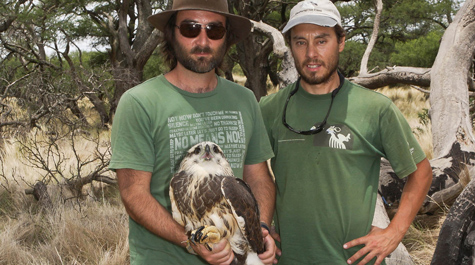CCB continues support of crowned eagle research
For the fourth consecutive breeding season, the Center for Conservation Biology is collaborating with the Center for the Study and Conservation of Birds of Prey of Argentina to investigate post-fledging dependency, dispersal and survival in the crowned solitary eagle.
The collaborative study tracks birds using satellite transmitters to investigate the early life of crowned eagles and to quantify movement and survival.
Since 2012, 12 transmitters have been deployed on nestlings with a goal of eventually tracking 20 eagles. Alarmingly, none of the tracked birds have survived to breeding age (assumed to be three years). Three birds have been shot, three have been electrocuted, one drowned in a stock tank and one died of unknown causes. The remaining four birds are between one and two years old. Early results suggest that juvenile survival may be contributing to population declines.
The crowned eagle is both one of the most critically endangered raptors in the world and one of the most charismatic species in South America. The species occurs in arid regions of Argentina, Paraguay, southern Brazil and southern Bolivia. The crowned eagle has an extremely low reproductive rate, producing a single offspring each year (possibly every other year). The birds feed primarily on snakes and armadillos. In the arid La Pampa region of Argentina, crowned eagles are nearly restricted to the declining Caldén forest and associated grasslands.
Fieldwork during the 2014-2015 breeding season is being conducted by Director of CECARA Jose Sarasola and Joaquín Cereghetti. In addition to deploying transmitters, the team is monitoring nest occupancy and breeding success.
Bryan Watts is director at the Center for Conservation Biology, a joint program of William & Mary and Virginia Commonwealth University.
 Skip to main content
Skip to main content

